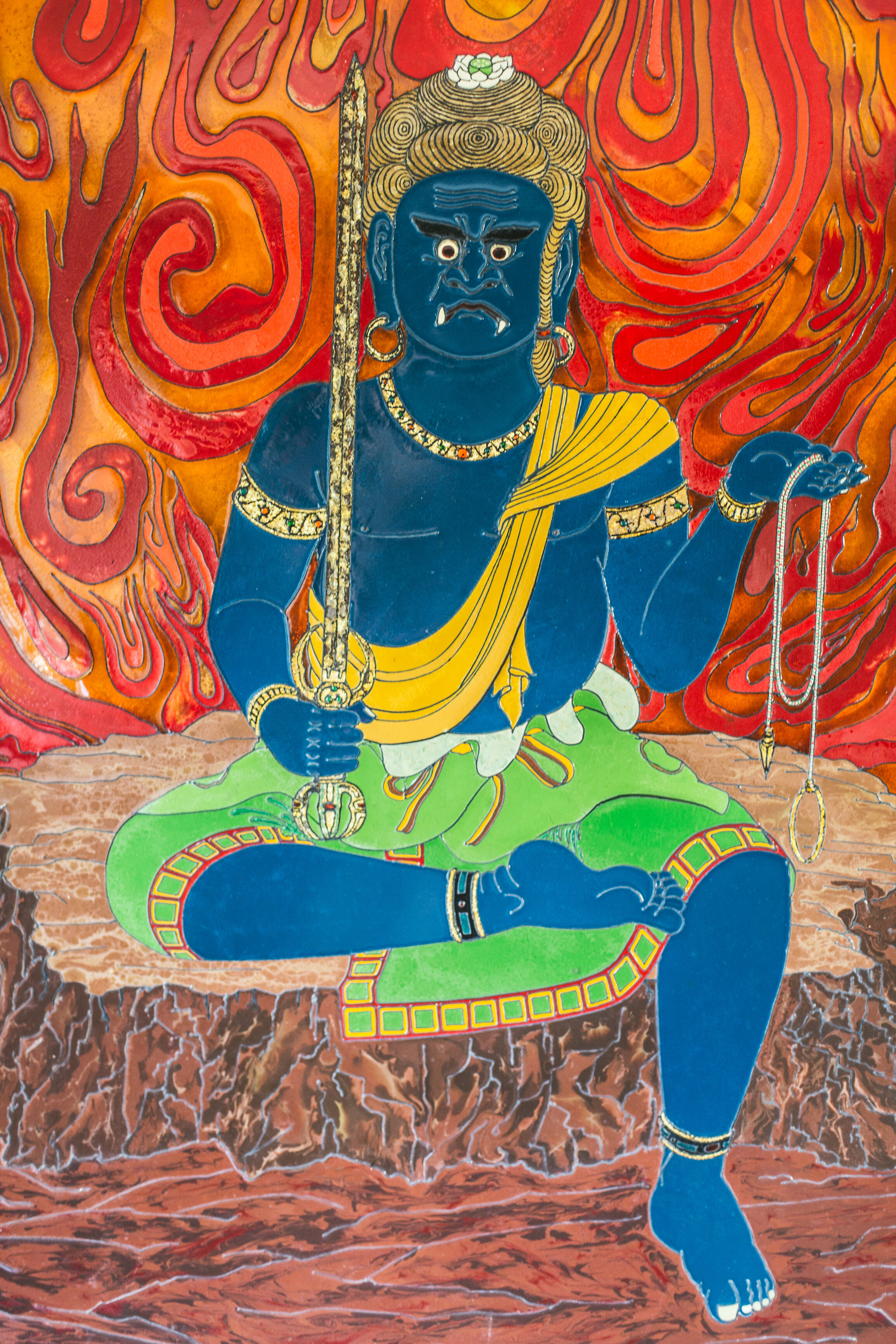TRAVEL // Inner Sanctum: The Quiet Retreat of Japan’s Mount Koya
NESTLED COOL, GREEN, AND GLEAMING IN THE WILDERNESS OF WAKAYAMA PREFECTURE, MOUNT KOYA IS ONE OF JAPAN’S HIDDEN GEMS.
The mountaintop monastic town of Koya is the center of Shingon Buddhism, a sect introduced to Japan in 806 C.E. by Kobo Daishi. Despite its remote location and probably because of it, Mount Koya remains a favored pilgrimage site of the Japanese. Women weren’t allowed on the mountain until 1872, but these days a train takes travelers of all types from Osaka’s Namba station directly to Koya-san. Itʼs an ideal day trip and an even better overnight. The journey only takes two hours, but as the train leaves Osaka and winds further into the mountains, it becomes obvious why Mount Koya was, and still is, a spiritual refuge. Perched high on the side of a mountain valley, the Koya railway line overlooks sweeping panoramas paralleled only by the beauty of the Swiss Alps. From the end of the line, the last few kilometers are by a cable car so steep it’s nearly vertical, and by a bus that winds along nauseating curves to the visitor center.
Three large temple complexes and over a hundred temples, many of them shukubo, temple lodgings, now stand in the small mountain town. Much of Koya’s resident population is made up of Buddhist monks. Over 500,000 journey to the town each year. Some are spiritual pilgrims in earnest and others, tourists eager to escape the sweltering summer heat in Koya’s cool alcoves.
Okuno-in temple, the inner sanctum of Mount Koya where Kobo Daishi, better known after his death as Kukai, is interred, is considered one of the most sacred sites in Japan. At the front of the Okuno-in is the Toro-do, or lantern hall, where 10,000 lamps burn constant flames in memory of Kukai’s death over a thousand years ago. The temple is surrounded by Japan’s largest cemetery, a vast and beautiful labyrinth of crumbling tombstones and moss-covered statues best viewed in the glow of early morning or late afternoon. Midnight walks aren’t recommended for the faint of heart.
The five-ringed stupas atop many of the tombstones in the cemetery are called gorinto (image above). From top to bottom, the tiers represent the five material elements of the world: earth, water, fire, air, and space. There is a sixth intangible element, shindai, the universal mental element of consciousness, representing the “knower.” The ambiguous interrelation of these elements represents the non-dualistic mindset of Shingon Buddhism.
Those who were closest to Kobo Daishi, including pupils, politicians, former feudal lords, and other loyalists are all buried in the maze of memorials. But while one end of the cemetery is picture-perfect in its natural decay, the other is crowded with memorials constructed by modern corporations including Sharp, Toyoda, and Panasonic. These sit atop the graves of prominent business figures and government officials. There’s even a 15-meter-high aluminum replica of the Apollo space rocket.
The Garan
Mount Koya’s central temple complex, the Garan, was originally constructed by Kobo Daishi. It consists of the Kondo (main hall), Konpon Daito (great tower), Saito (western pagoda), Toto (eastern pagoda), Miedo (founder's hall), and other small temple and shrine buildings. The Daito and Saito are both rare, two-tiered pagodas that more closely resemble Indian architecture than traditional three-and-five-tiered Japanese pagodas. The Konpon Daito was rebuilt in wood and concrete in 1937 after a catastrophic fire. It signifies the world of action while the Saito denotes the world of wisdom. The Kondo, also rebuilt in the 1930s, represents the union of wisdom and action, the central tenet of Shingon Buddhism.
Jizo Bodhisattva
Their eyes are watching from every corner of the Okuno-in graveyard. These sometimes-creepy, sometimes-cute statues are effigies of Jizo-sama, a most beloved Japanese deity, the patron saint of expectant mothers, children, firemen, travelers, and pilgrims. There may be thousands these crude likenesses nestled among the graves atop Mount Koya, some in groups numbering a hundred or more.
It is not uncommon to see Jizo statues (top image) wearing red robes and bibs or surrounded by children’s toys. This is because Jizo-sama is best known as the guardian of babies who perished before they were born. In Buddhist lore, the souls of these children, dead before their births could be consecrated, are sent to hell for the suffering they cause their parents, where they are forced for all eternity to build “castles” of small rocks. Jizo-sama rescues them from the torments of demons and hides them in his sleeves so that they may be relieved of their suffering.
Kongobuji
Kongobuji is the head temple of the Shingon Buddhist sect. It was constructed in 1593 by Toyotomi Hideyoshi and is famed for the beautiful painted Japanese doors within (inset image).
Shukubo Lodging:
Though a round trip to and from Mount Koya is possible in one day, the experience is incomplete without an overnight stay. Approximately fifty of the more-than-one-hundred temples built atop Koya-san are shukubo, temples that offer lodging and meals to travelers. Shukubo give everyone from religious pilgrims to English-speaking tourists the chance to connect with temple life, an otherwise off-limits experience. All supply a comfortable futon bed (usually with heating pad) and the option of gender-separated communal bathing. The meals served at temple lodgings are shojin-ryori, the traditional vegetarian cuisine of monks. Many shukubo give guests the option of rising at 6 or 7 a.m. for morning prayers and chanting or temple cleaning services before breakfast.
APPROACH:
Local, express and super-express trains leave from Osaka’s Namba station on the Nankai Koya line. The trip takes between an hour and a half to two hours and tickets cost 1120 yen with a surcharge for the faster, reserved seat super-express trains.



